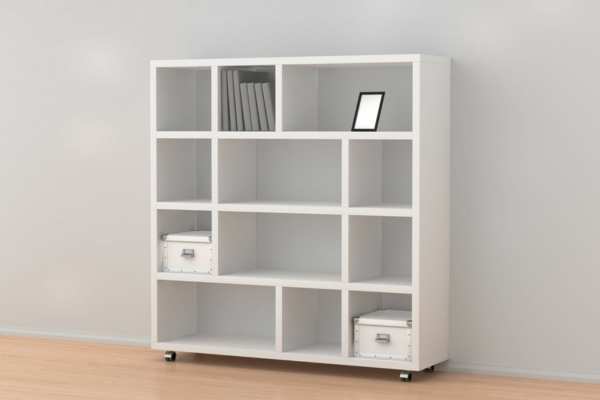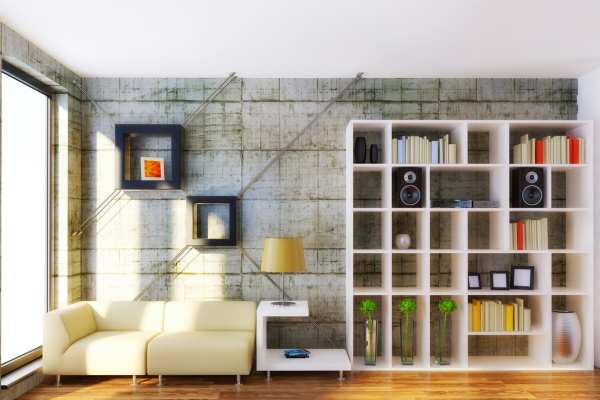A wobbly bookshelf can be A source of constant annoyance And A potential safety hazard in your home. Over time, The weight of books, Coupled with the natural wear And tear of furniture, Can lead to your once-sturdy bookshelf becoming unstable. But fear not! Whether it’s a cherished antique passed down through generations or a functional piece from a flat-pack, there’s no need to live with the wobble or consider replacement just yet. This blog post is designed to guide you through the steps of diagnosing the problem And fixing your unsteady bookshelf, Turning It back into the reliable piece of furniture it once was. So, grab your toolbox, and let’s put an end to fix that wobbly bookshelf for good.
The Common Issue Of A Wobbly Bookshelf

Bookshelves, Like any other furniture, are not immune to common wear and tear. One of the most prevalent issues that many bookshelf owners face is the dreaded wobble. The problem often arises from A combination of factors. Over time, the weight of books can cause shelves to sag, joints to loosen, And the overall structure to become unbalanced. Furthermore, Moving furniture around or uneven flooring can exacerbate the issue. A wobbly bookcase is not just an aesthetic problem but can also be an indicator of structural weakness. It’s A problem that needs addressing, Not just for appearance’s sake, But for the stability And longevity of your bookcase.
Importance Of Fixing A Wobbly Bookshelf

The importance of fixing A wobbly bookcase cannot be understated. A shaky bookshelf isn’t just irritating; It poses A potential safety risk, Particularly if you have children or pets who could accidentally topple it over. Besides, an unstable shelf can cause damage to your beloved books, knick-knacks, or any other items you display. Furthermore, addressing the issue promptly can prolong the life of your bookshelf, preserving its functionality and appearance. This is especially important if your shelf is an antique or holds sentimental value. Fixing the wobble not only restores stability but also ensures your bookcase continues to serve its purpose effectively.
Causes Of A Wobbly Bookshelf

1. Uneven Floor Surface
A significant cause of a wobbly bookcase is an uneven floor surface. No matter how well-constructed your bookshelf may be, if It’s placed on an irregular surface, It is likely to wobble. Old houses, in particular, Can have floors that aren’t perfectly level, making furniture placement A challenge. In some cases, Even A tiny variation in the floor level can cause instability. It’s always a good idea to check the levelness of your floor before placing furniture, especially tall or heavy pieces like bookshelves, which can amplify the issue.
2. Loose Screws Or Fittings
Another common cause of A wobbly bookcase is loose screws or fittings. Over time, The weight of books And other items can cause screws to loosen, resulting in a shaky structure. This issue can be exacerbated if the bookshelf is moved frequently or if it has been assembled and disassembled multiple times. While It’s an irritating problem, It’s often one of the easiest to fix. Regularly checking and tightening your bookshelf’s fittings can keep it sturdy and prevent the wobble from developing.
3. Warped Or Damaged Shelves
Warped or damaged shelves can also lead to A wobbly bookcase. Materials like wood can warp over time due to changes in humidity, Temperature, or simply the weight of the items they bear. This warping can alter the balance of the entire shelf, Causing it to become unstable. Similarly, Any damage to the structure – Be It A crack in A shelf or A broken joint – Can compromise the stability of the bookcase. Regular inspection And prompt repair or replacement of damaged components can help maintain the integrity And stability of your bookcase.
Tools Needed To Fix A Wobbly Bookshelf

The first tool you will need is A screwdriver. Tightening the screws on your bookcase can often solve the wobbling issue. Start by examining all the screws on the shelves And frame to identify any loose ones. Use the screwdriver to tighten them securely, But be careful not to overtighten them as this could strip the wood or cause damage.
A level is another essential tool for fixing A wobbly bookcase. Place It horizontally on each shelf surface to determine if they are even or slanted.
Step-By-Step Guide To Fix A Wobbly Bookshelf

1. Analyzing The Problem
The first step to Fix your wobbly Bookshelf is to identify the root cause of the problem. Begin by emptying the bookshelf to relieve It of extra weight And make the assessment easier. Wobble the bookshelf gently to see if it’s the entire structure that’s shaky or if the instability is localized to a particular part. Check if the shelves are warped or damaged and inspect the screws or fittings for any looseness. Also, use a level to determine if the bookshelf is standing straight or if an uneven floor surface might be the culprit. Understanding the Problem will Allow you to devise A suitable solution.
2. Fixing An Uneven Floor Issue
Uneven flooring can be a significant contributor to a wobbly bookcase. This is especially common in older homes where floors may not be perfectly level. Luckily, This issue can be resolved without much hassle. Shims, Or thin pieces of material, can be inserted under the lower end of the bookcase to balance it. Start with a thin shim and add more as needed until your bookcase stands firm and level. Alternatively, consider adjustable furniture pads. These are attached to the bottom of the bookcase, And you can adjust each pad’s height until the bookcase is stable. Remember, It’s crucial to ensure the bookcase doesn’t lean in any direction, as this can risk toppling and damage.
3. Tightening Loose Screws Or Fittings
Loose screws or fittings can significantly impact A bookshelf’s stability. They typically loosen over time due to the weight of books and the natural movements of the furniture. If your bookcase is wobbly due to loose fittings, you’ll need to systematically check each screw or bolt. Using A screwdriver or adjustable wrench, Tighten each one. Pay particular attention to screws securing the shelves and the bookshelf’s frame, As these carry most of the load. If you find any stripped or damaged screws, it’s best to replace them. Regularly tightening screws and bolts can extend your bookshelf’s lifespan and maintain its stability.
4. Repairing Or Replacing Damaged Shelves
Damaged or warped shelves can destabilize your bookcase, leading to wobbling. If the shelves are merely warped, try flipping them over to balance out the weight distribution. For more severe damage like cracks or breaks, consider a repair. Wood glue and clamps can fix minor damages. Fill larger cracks with wood filler, let it dry, and then sand it smooth. If A shelf is significantly damaged, It might be best to replace it. Remember to consider the weight your bookcase will bear when selecting replacement material. Sturdier materials can withstand heavier loads and resist warping over time.
Pro Tips For Maintaining A Steady Bookshelf
Maintaining your bookcase can prevent wobbling issues. Regularly tighten screws and bolts to keep the structure secure. Avoid overloading shelves to prevent warping. If your floor is uneven, regularly check your furniture pads or shims for wear and tear and replace them as needed. Regularly inspect your bookcase for any signs of damage and address them promptly to maintain a steady, sturdy bookcase.
Conclusion
Fixing A wobbly bookcase might seem like A daunting task, but with the right tools and guidance, You can easily do it yourself. The key is to identify the cause, Have the right tools on hand, And follow the step-by-step guide to rectify the issue. By maintaining your bookcase And addressing any instability issues early, you can enjoy your sturdy, wobble-free bookcase for years to come. Remember, A stable bookcase is not just an aesthetic feature in your room, But also A safety measure, especially if you have young children or pets. So roll up your sleeves and say goodbye to that wobbly bookcase!
